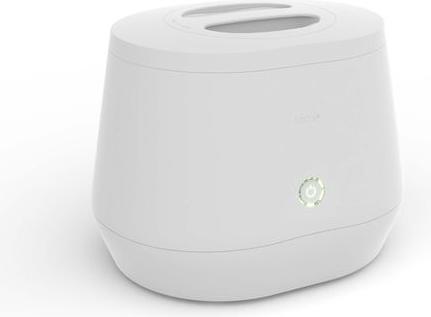

A device that produces compost in 24 hours
It usually takes at least nine months for kitchen waste to become compost. Lomi gets it done in 24 hours. Really?
The Lomi rumbles along. Carrot peels, some wilted lettuce, potato peels, and other kitchen scraps – I throw all these leftovers into the Lomi. It can take up to three litres, and at the push of a button it promises to compost everything.
I choose the program with the little plant, «Grow Mode». And then it’s a matter of waiting – the device works for just under 24 hours. During this time, the waste should turn to compost.

I can’t see anything from the outside, I just hear sounds. Despite the composting process, I don’t smell anything either. Sometimes it rumbles a bit, there’s a fan running. It sounds similar to a dishwasher, also in terms of noise level. I don’t necessarily want to read, work or watch TV right next to it. That’s why I keep it in the kitchen.
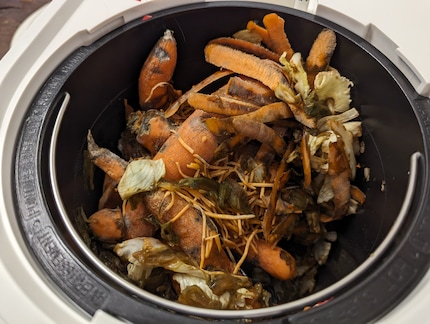
Source: Lorenz Keller
The organic matter is sent for analysis
Then comes the moment of truth. After about a day, the rumbling stops, and I open the lid. As promised: the three litres of organic waste has turned into two handfuls of substrate. Not like the potting soil you can buy in the store, but rather a kind of fresh forest soil. The compost is coarse and fibrous.
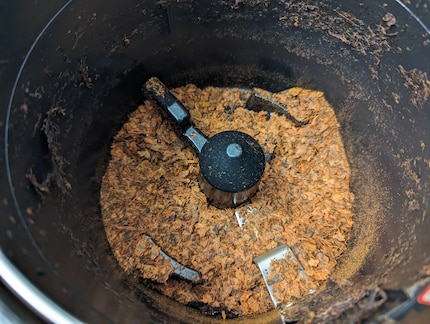
Source: Lorenz Keller
According to the manufacturer, this is now a fertiliser that can be added to a plant bed or used as a top layer in a flower pot. Since I don’t really know much about soil and compost and don’t have time to observe the effect on my plants, I’m sending the substrate in for a lab test.
Garden specialist Hauert offers a nutrient analysis. You can send in a soil sample from your garden and get back a nutrient assessment. This will tell you the soil quality and, if necessary, how you can help your garden plants with fertiliser. The Lomi compost is analysed. I really hope they can answer my question of whether the substrate obtained is actually suitable for use as compost or fertiliser.
How the Home Composter works
The Lomi is a chopper and blender that also uses heat and aeration. This helps the organic matter decompose faster. To prevent the apartment from stinking during this process, you need to fill two filter containers with activated carbon – and replace them about every six months. Luckily odours aren’t an issue when I do my test.
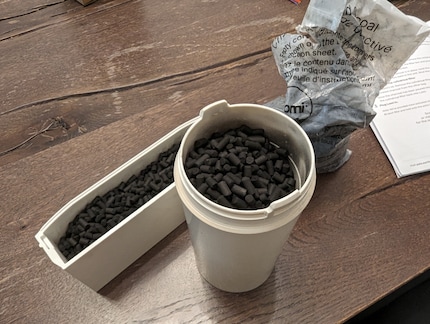
Source: Lorenz Keller
Besides 24-hour mode, there are two other programs. «Eco-Express Mode» only takes three to five hours. You can add leftovers and other foods. The organic waste is then evaporated and dried. It loses volume and no longer rots away, as is the case when it’s been in the green bin too long. Unlike the compost previously mentioned, this one can’t be put in the garden. You’d have to compost it further or give it to the green waste collection.
In «Lomi-approved Mode» you can even add bioplastics, recycled packaging or disposable tableware to the green waste. Lomi has tested several products from various manufacturers: a list including pictures of test runs can be found here. However it’s primarily brands from North America listed, which aren’t common here. In general, anything that can be composted should work. The same applies here: the residue can’t be used straightaway.
What about the environmental impact?
How sustainable is the Lomi? The question still remains. After all, the Lomi needs electricity – about one kilowatt hour for one run in 24-hour mode. That would be 60 minutes of blow-drying hair or watching TV for 7 hours.
The manufacturer itself has also looked into the issue and made various calculations. However, these are always based on you throwing the organic waste in the general rubbish bin. If you use Lomi instead, you can save 100 to 230 kg of CO₂ per year, according to the manufacturer.
Overall, it quickly becomes clear: in terms of energy, Lomi is only worthwhile if you actually use the compost. And even then only because the Lomi is delivered CO₂-neutral on paper thanks to offsets. So in the personal calculation, a lot depends on what else happens to the organic waste and whether you run Lomi on green power or not.
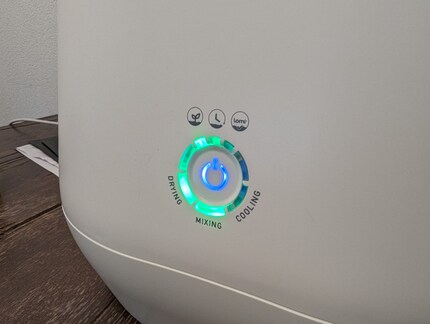
Source: Lorenz Keller
Turns out it’s more like fertiliser
One week later, the results of the substrate sample come back. I can now see how much of the readily available nutrients the Lomi compost has, such as nitrate, phosphorus, potassium or magnesium. These are the nutrients that dissolve in water and can be absorbed by the plants, according to Hauert’s analysis.
After the measurement, it’s clear: what comes out of the Lomi isn’t so much compost as much more fertiliser. In other words, the nutrients are highly concentrated. Phosphorus, potassium and magnesium are far above the usual amounts in soil. Only nitrate is within the normal range.
This means: you should be cautious using this substrate – as you would do with fertiliser. If you mix it with plant soil, use less than 10 per cent.
Important: the Lomi substrate has a problem that you often have when composting, namely a very high salt content. An overdose can be harmful to plants. At least the lab didn’t detect another compost problem, i.e. a too high pH value. The pH value of 5.3 is well within the normal range of 5.0 to 7.0.
The lowdown: It works – but…
Lomi is from the USA and was developed with big city homes in mind. In this country, most people have the option of adding compostable household waste to the green waste collection. Or to utilise it for their own compost. That’s why it’s not worth all the pennies.
If you don’t have the possibility of green waste collection, Lomi could be something for you. You should be able to use the extracted substrate for your own plants or gift it to garden owners. You could also concentrate the organic waste and food scraps so that they can be stored longer as dry granules, instead of throwing them in the general waste bin and risking bad smells.
Header image: Lorenz KellerGadgets are my passion - whether you need them for the home office, for the household, for sport and pleasure or for the smart home. Or, of course, for the big hobby next to the family, namely fishing.


